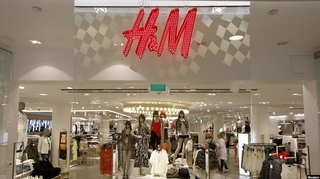Eva De Eva, CHIC LAND, IVY Moda and Canifa make tens or hundreds of billions of dong in revenue each year.

Canifa debuted in 2000 as a wool-made product brand, but has developed into a brand for diverse subjects.
From the first two stores in Hanoi in 2000, Canifa now has about 100 stores in 24 cities and provinces. In 2018, it reported record revenue of VND931 billion, or 2.4 times higher than the year before.
IVY Mode joined the market in 2005, but it has been going more slowly. Only in 2017 could the brand make a breakthrough with revenue of over 400 billion. The same figure was reported for 2018.
| The revenue of Vietnamese fashion brands continuously increases year after year, which shows that they have firm positions in the market despite the presence of many famous foreign brands. |
The high growth rates of younger brands such as Eva De Eva and CHIC LAND show the strong rise of Vietnamese fashion brands. The results are described as ‘very encouraging’ in the context of the presence of a lot of foreign brands in Vietnam, including Zara, H&M and Mango.
Analysts said Vietnamese brands regularly run sale promotion programs to lure more customers. However, the sale-off prices set by the brands are just equal or even a little higher than foreign brands. In addition, they have been expanding their networks to increase the presence in the market.
The strategy partially helps make Vietnamese brands better known in the domestic market, but leads to higher operation costs. The expenses on branches and sale points eat into the brands’ profits and many brands have reported loss.
In 2018, despite the high revenue, Canifa only made a modest post-tax profit of VND6.5 billion, which means the low net profit margin of 0.7 percent. With smaller scale, CHIC LAND reported the small profit of VND1.5 billion, or 1.8 percent. Meanwhile, IVY Moda reported the loss of VND1.2 billion and the cumulative profit of VND4.1 billion by December 31, 2018.
With the reported loss of VND8.9 billion in 2018, Eva De Eva has incurred the accumulative loss of VND67.2 billion.
According to Vu Vinh Phu, a trade expert, Vietnam’s garment and footwear companies heavily rely on material imports from China. If Vietnam applies reasonable policies to encourage t'material production, it would create a high number of jobs and help reduce input costs for garment companies.
He also said that the difficulties in accessing capital and land make it difficult for enterprises to scale up production. Only when they can expand production and cut production costs will they have advantages in prices to compete with foreign brands.
Kim Chi

Vietnam attracts foreign fast-fashion brands
Zara’s revenue reached VND1.7 trillion in 2018, six times higher than 2016 thanks to the Vietnamese people’s preference for fast fashion styles.

H&M keeps expanding amidst fast-fashion's slowdown globally
As the fast-fashion trend has been spiralling down in the global market, H&M still accelerates its presence in Southeast Asia, especially Vietnam.
 The revenue of Vietnamese fashion brands continuously increases year after year, which shows that they have firm positions in the market despite the presence of many famous foreign brands.
The revenue of Vietnamese fashion brands continuously increases year after year, which shows that they have firm positions in the market despite the presence of many famous foreign brands.